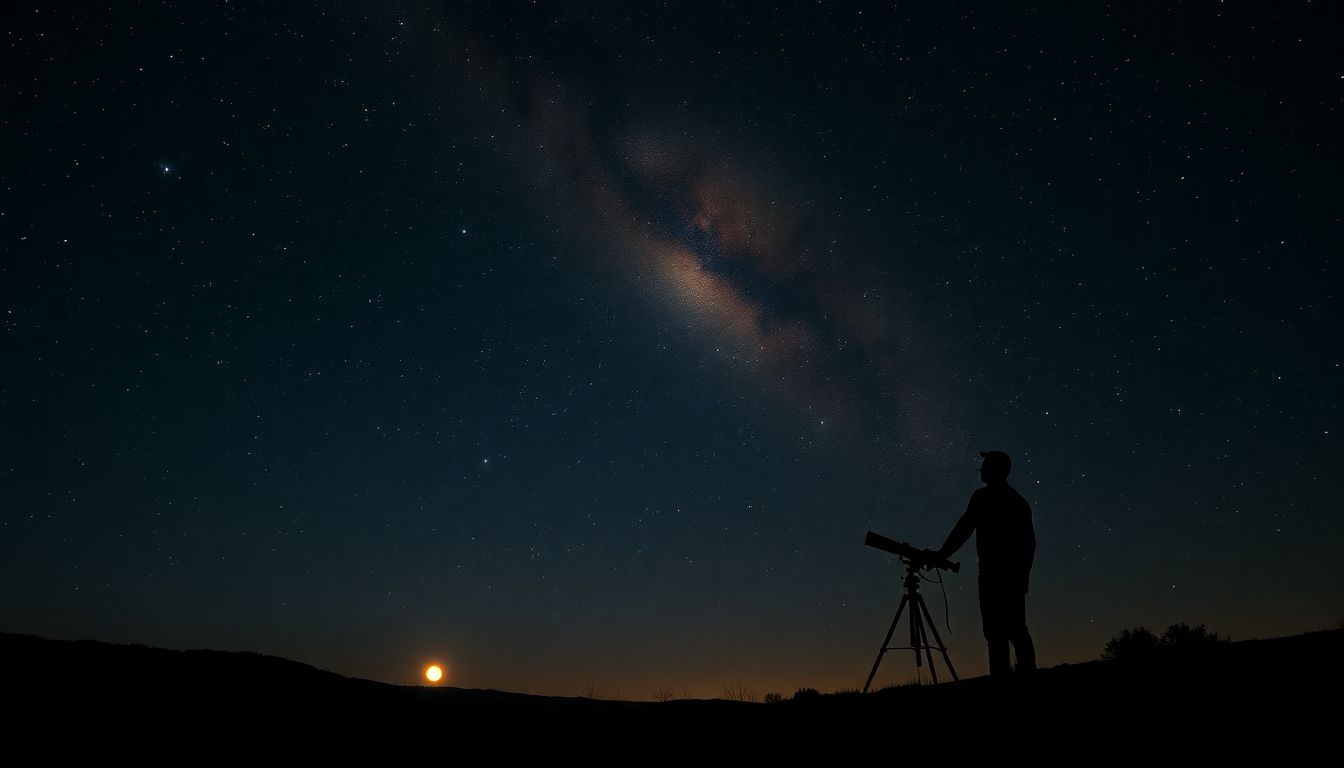
How to Find Arcturus in the Night Sky Tonight: A Complete Guide for Stargazing Enthusiasts
Introduction
Arcturus is one of the brightest stars in our sky, often called the “Guardian of the Bear” because it’s part of the constellation Boötes. Its brightness makes it easy to spot once you know where to look, and it has been a guiding light for travelers for thousands of years. Whether you’re a beginner or a seasoned stargazer, learning how to find Arcturus can make your nights under the stars more exciting. The best time to see it is during clear, dark nights, especially in specific seasons when it’s most visible.
Understanding Arcturus: The Brightest Star in Boötes
Characteristics of Arcturus
Arcturus is a giant star, classified as a K-type orange giant. It’s about 36.7 light-years away from Earth — pretty close in cosmic terms. Its brightness floats around magnitude -0.05, making it the fourth-brightest star visible from Earth. This star outshines many others in the night sky because of its size and luminosity. With an obvious orange hue, Arcturus is easy to distinguish from duller, white stars.
Cultural and Historical Significance
Across different cultures, Arcturus has played a key role. Ancient sailors used it to navigate long journeys before modern tools existed. Many mythologies see Arcturus as a sign of seasons changing or a symbol of guidance. It also shows up on old celestial maps, helping astronomers connect dots in the night sky for centuries.
The Best Time to Spot Arcturus Tonight
Seasonal Visibility
In the Northern Hemisphere, Arcturus is best seen from late spring through fall, peaking in the summer. During these months, it rises in the evening and is visible for most of the night. Conversely, in the Southern Hemisphere, Arcturus is also visible but in different positions, usually higher in the sky during winter months.
Optimal Time of Night
To catch Arcturus at its best, look for it after the sky darkens and before dawn. The hours between 9 p.m. and 2 a.m. are usually ideal. Use local sunset times to plan your session. If you wait until the sky is fully dark — no moonlight or clouds — your chances increase.
Factors Affecting Visibility
Moonlight can make stars harder to see, especially during a full moon. Light pollution from city lights can also hide faint stars, but Arcturus’s brightness makes it resilient. Clear skies with minimal clouds and low humidity give the best viewing conditions for finding Arcturus.
How to Locate Arcturus: Step-by-Step Guide
Preparing Your Equipment
Binoculars are great for beginners, but you don’t need a telescope. A smartphone star app can help you identify the star easily. Print out a star chart or use a stargazing app that shows Arcturus’s position from your location.
Finding the Big Dipper and Using It as a Star Map
Look for the Big Dipper in the northern sky. Find the “Pointer Stars,” Dubhe and Merak, at the end of the cup. Draw an imaginary line from Merak through Dubhe, then extend that line outward. It points directly to Arcturus, about 35° away, or roughly the distance from your fist to your open hand when held at arm’s length.
Using Angular Distance and Constellations
Remember, Boötes resembles a kite or a ladle with Arcturus at its base. Once you’ve identified the line from the Big Dipper, scan the sky along it until you spot the bright, orange star. Recognizing the shape of Boötes helps confirm you found the right star.
Alternative Methods
Northern Hemisphere observers can spot Arcturus by following the curve of the Big Dipper’s handle. From a southern vantage point, locate the “Sickle” part of Leo, then look for Boötes nearby. Its distinctive shape and brightness make it stand out.
Expert Tips and Common Challenges
Techniques to Confirm You’ve Found Arcturus
Compare the star’s orange hue—most stars look white or bluish. Star maps or apps can verify your sighting. If the star matches the brightness and color of Arcturus on your guide, you’ve likely found it.
Overcoming Obstructions and Light Pollution
Find a darker spot away from streetlights and city glow. Early evening or late at night often provides fewer lights. Timing your observation during a new moon or when moonlight is minimal also helps.
Safety and Comfort Tips for Night Sky Observation
Dress warmly if it’s cold outside. Bring a red flashlight to see your star charts without ruining your night vision. Protect your eyes and equipment from dew and bugs.
Additional Resources for Stargazing Success
Use free star chart apps like Stellarium or SkyView. Join online astronomy forums or local star parties for tips and community support. Clubs often organize guided night sky tours that teach you how to spot stars, planets, and more.
Conclusion
Finding Arcturus tonight is simple if you follow the right steps. Use the Big Dipper as your guide, look for the orange glow, and pick a dark, clear night. Remember, patience pays off—stargazing is all about enjoying the process. Keep your star charts up to date and stay curious about celestial events. With practice, spotting Arcturus will become second nature, opening the door to explore the night sky even further.

